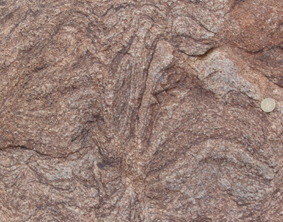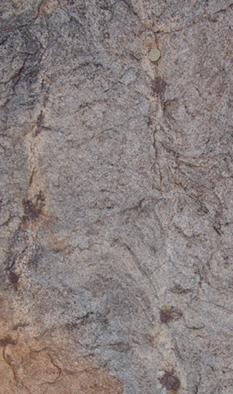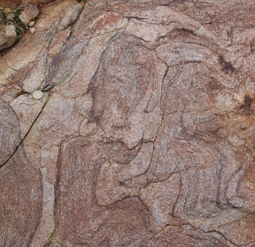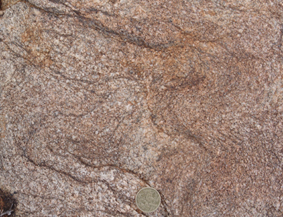Double Schistosity Hill. Laminated leucogranite folded by F1, and F2, with axial planar S2 garnet-bearing leucosomes.Related pages: Monument locality: the role of melt in deformation Diatexite Hill: from metatexite to granite
Interpretation: |
|
C) F2 folds trending NNE-SSW  |
D) Leucosome parallel to S2 including large peritectic garnet  |

